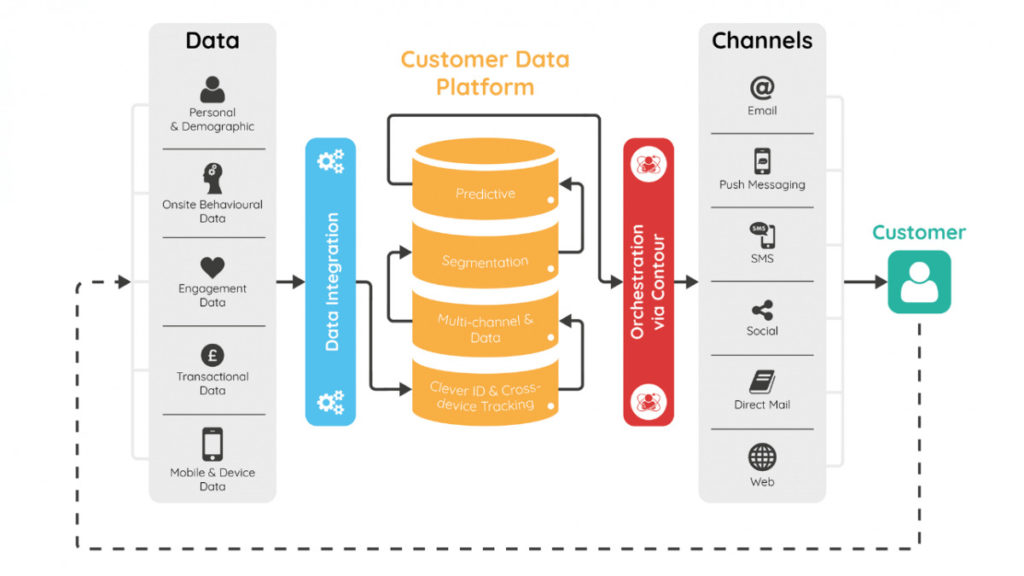Providing a good user experience is crucial for every business running on any platform. As digital marketing becomes more competitive, companies are striving to serve their audience in the best way possible. But given the varied demographics, interests, and heterogeneous nature of users, companies across the globe often struggle to tailor-serve their users. Traditional approaches to user categorization such as geographical location, age, and gender fail to cater to the audiences in an effective way. Mass campaigns, and even personalized campaigns that group customers by persona or segment, are no longer hitting the mark. Cost-consciousness is becoming more of a concern, so it is more important than ever to spend marketing budgets wisely — targeting customers with relevant and contextualized offers. Hyper personalization is one advanced way for companies to target individual customers through tailor-made personalization.
What is Hyper personalization?
Hyper personalization is a marketing strategy that exploits user data to enhance customer experience by providing customized content, products, and services according to customers’ wants and preferences. The data used for hyper personalization can include profile and demographic data, location, browsing data, purchasing decisions, social-media preferences, and online presence. Hyper personalization applies automation and smart insights to serve each unique user with customized content.

Hyper personalization also employs the latest technologies and analytical capabilities such as artificial intelligence (AI), big data, data analytics, and automation to send highly contextualized communications to specifically targeted audiences — at the right time, place, and through the right channel. Hyper personalization can increase customer satisfaction, brand loyalty and overall marketing effectiveness.
Why does it matter?
With the growing online presence of most businesses, most of today’s customers expect to be treated as individuals rather than being bundled in segments. The use of AI in hyper personalization helps companies better engage with their customers — in contrast to the traditional manual customer segmentation based on demographics or behavioral information.
Hyper personalization helps businesses maximize revenue through individualized or dynamic pricing, intelligent product/service recommendation engine, detailed product targeting, and data and analytics-driven content generation. It reduces customer acquisition and retention costs by using workflow automation. Hyper personalization can also help to elevate the overall customer experience by employing efficient client/buyer cycles and real-time customer segmentation.
How does it work?
As straightforward as it sounds, hyper personalization can be very challenging to implement. Data collection and efficient data analysis are major challenges in setting up a hyper personalization framework. Other hurdles include automating decisions at scale and achieving a real-time view of customers with full context to understand their behavior. There are several ways to achieve a fully-functional hyper personalization framework. Regardless of the domain of use and implementation, major hyper personalization functions typically include data collection, client segmentation, targeted journey, effectiveness measurement, and analysis.

Machine learning (ML) and AI are now widely used to develop and train models for hyper personalization. ML algorithms are filled and trained against large customer data sets to learn and adapt to the market trends and what customer desires. These factors are extracted and identified to train the model further. These system-generated insights are used in real time to monitor and measure effectiveness. The algorithms are then further tweaked based on these insights until they meet the requirements.
Applications
Many industry experts believe that hyper personalization is a key enabler to drive customer-centricity across several industries. It can be used in almost all the domains that leverage digital marketing strategies for acquiring and properly serving customers. Finance, retail, consumer, public sector, health care, and automotive are some of the major sectors that have started using hyper personalization to tailor advice and guide users to an appropriate product or service. Hyper personalization can also help build an ideal and effective customer journey map through relevant programs. It does this by understanding customer needs and predicting the segment changes early.
Several countries have started employing hyper personalization to serve their citizens who may have a wide range of socioeconomic and demographic complexities. The real-time data collection and consolidation helps hyper personalization achieve the accuracy and efficiency to correctly meet the needs of individual citizens, as well as to prioritize crucial cases. Hyper personalization is also helping the healthcare industry achieve better doctor-patient relationships by ensuring each individual gets a unique treatment plan.
Several global giants such as Amazon, Netflix, and Deloitte are already widely using hyper personalization. They are implementing personalized AI-powered chatbots, robots, avatars, greeters, and more to more effectively tailor-serve their audiences.
Conclusion
Machine learning, data engineering, and artificial intelligence are transforming our everyday lives. These technologies are powered by several new trends and advancements in several fields. User personalization used to be a very complicated, manual, and inefficient process of tailoring products and services to individuals. Now it is a relatively efficient and easy approach, thanks to AI-powered hyper personalization. Hyper personalization reduces segmentation and optimization time, allowing companies to save on costs and cater to individuals’ needs.
Image credit: filestage



